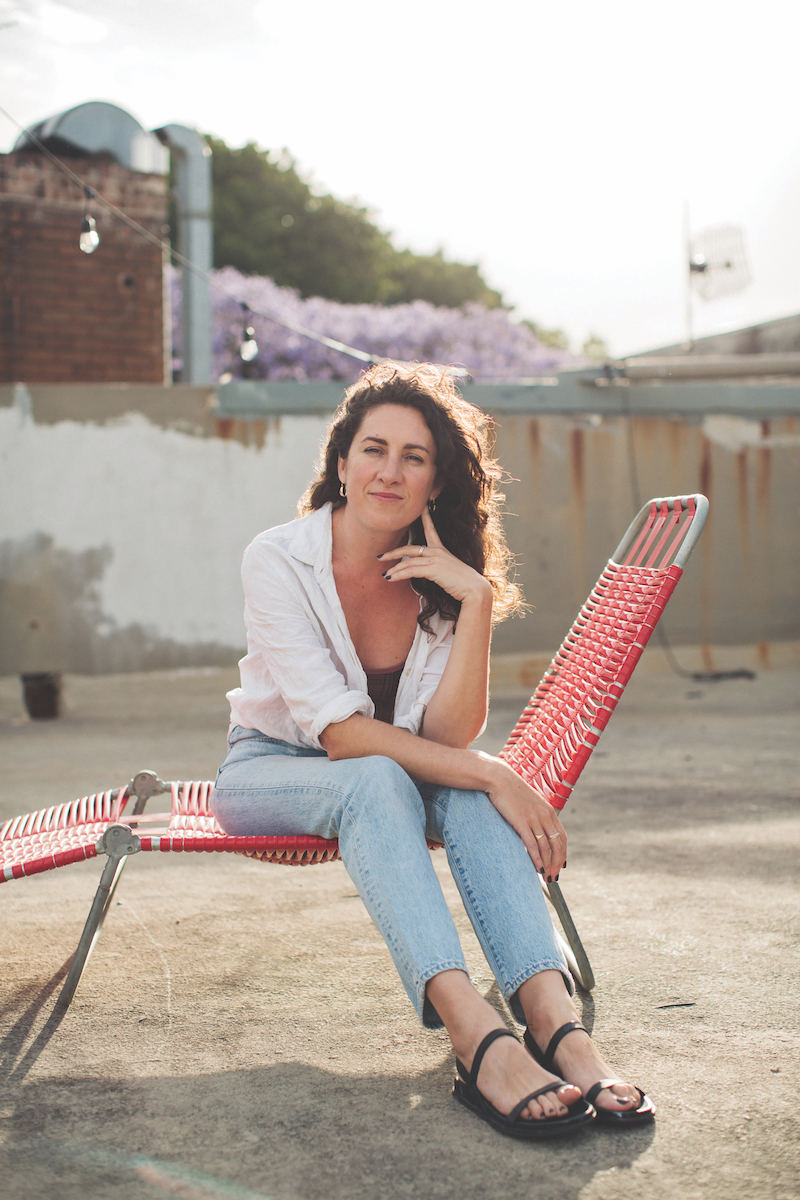“Art feels like a conversation with the world,” says Laura Jones, “trying to understand, explore, and engage in dialogues with it.” If the Sydney-based artist’s prolific output of vibrantly-coloured floral still life and landscape paintings, interspersed with the occasional portrait and more recently, monotypes, are anything to go by, the conversation is certainly a fruitful one.
When we chat, Jones is paying a visit to her family home in the Hawkesbury region of the lower Blue Mountains – a pilgrimage she makes every couple of weeks. Here, she gathers flowers that grow abundantly in the area, like rhododendrons, hydrangeas and her favourite, flannel flowers. “It’s really good to get out of the city and see the horizon, soak up a bit of nature, and then go back and bring it into the studio,” she tells me.
Immersed in the natural beauty of the Blue Mountains landscape, Jones’ upbringing was a creative one. She loved drawing, collage, and as a teen, lino cuts, but her mother’s skill and passion for arranging flowers left a lasting impression. “They were never neatly arranged, always gutsy – big branches and unusual shapes and varieties,” recalls Jones, who became a florist in her 20s to support herself, and soon after, began painting the kinds of floral still lifes she is now best known for.
Becoming an artist had not, however, been a foregone conclusion for Jones. Upon finishing high school, she spent a formative year on exchange in Japan, where a science teacher encouraged her to study art when she returned home. But not knowing any working artists and with the notion that she should get a “real job”, Jones completed an arts degree instead. It was afterwards that she felt ready to commit to visual art, and enrolled in a printmaking course at UNSW, Sydney which led to her painting practice. As a twenty-something year old, the artist honed her skills in studios wherever she could find – once in a pub overrun by bikies, and another in a haunted pub with ghost tours of the attic, where Jones was at work.
These days, Jones is fluent in bold and inventive use of colour, energetic composition stemming from rapid application of paint, and an undeniable sense of poetry in her depictions of the natural world. “I hope my works leave room for people to feel a satisfying sense of visual harmony,” she says, “but I also hope to surprise people with my paintings – I don’t want them to be easy.”
Having now called Sydney home for 20 years, Jones has had studios in many characterful, unloved places – a once-famous, disused nightclub inside an old cinema on Oxford Street being particularly memorable. “These spaces that people think are totally rundown, artists can make something magical there,” she says. “The artistic community is vibrant and strong, and I believe we contribute to the culture of a city in random and beautiful ways.” One of these ways has become particularly salient in Jones’ practice in recent years. “We are going through several societal and ecological transformations and crises, and arts of all forms are critical aspects of the conversation,” she says.
Her concern about the impacts of global warming on the Great Barrier Reef led Jones to undertake a kind of self-funded residency at Lizard Island Research Station in 2016. Working side by side with scientists studying coral bleaching, she found the trip incredibly invigorating and produced a magnificent series of paintings of underwater scenes in response. In a similar vein, the artist joined a voyage to Antarctica in 2018, which catalysed the impressive body of work The Listening Ship.
Continuing to find beauty in the fragile, the bushfires of 2019/2020 that ravaged much of the landscape near where she grew up led Jones to create particularly poignant and personal works. To her unexpected delight, pink flannel flowers suddenly bloomed en masse in the wake of destruction after an absence of 50 years, covering the land like carpet and inspiring her submission to the 2021 Wynne Prize. “It was this huge show of nature saying ‘things aren’t right here’,” she reflects, “but there was also immense power and beauty in that resistance and the fascinating adaptations of plants.” Taking about six months to complete and titled Bushfire ephemerals – Wollangambe wilderness, the work was selected as a finalist in the prestigious landscape prize.
After the tumult of the pandemic and a busy few years of exhibiting, Jones is currently enjoying the chance to “just muck around” in the treasured Darlinghurst studio she shares with fellow artist Jason Phu.
With ten plus years of rigorous studio practice and a dedicated following that sees her shows frequently sell out – as in her recent solo Music For Trees at her representative gallery Sophie Gannon Gallery, Melbourne – comes a certain confidence. “Whereas before I would battle with painting… my goal at the moment is to simplify and just let things be,” she explains. “Who knows what art from this time will look like to people in 100 years – but I hope it shows that we were engaged and cared about our world, or that we at least tried to explain how it feels.”
Featured Image: Artist Laura Jones.Photo: Rachel Kara. Courtesy: the artist.

